Hong Kong markets for every type of shopper
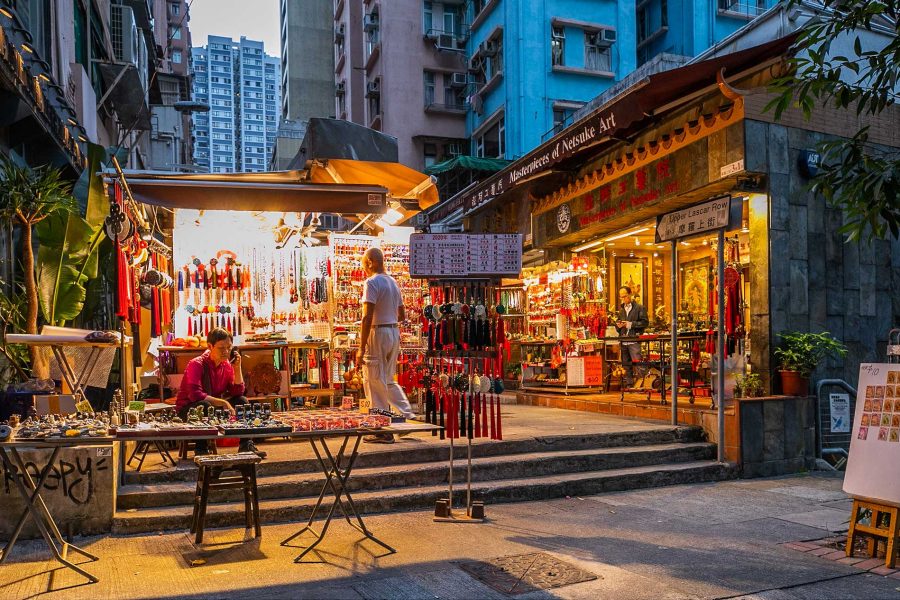
Hong Kong has something for nearly every shopper’s needs, from the bargain-hunter in search of cheap fashion or electronics to the vintage lover who wants to browse a flea market for treasures.
The city also makes shopping efficient since, per tradition, businesses offering similar goods and services tend to cluster together. That means if you’re on a shopping mission – say, to find a pair of limited-edition sneakers or a pet goldfish to boost your fortune – often you can size up your options right on one street.
Let’s not forget one of the thrills of the Hong Kong market shopping experience: bargaining, which is a must. Remember shopkeepers will always offer a much higher price than what they are willing to settle on; be prepared to pretend to walk away if the price isn’t quite right, and you will usually come to a good compromise.

Credit: Mike Pickles
Apliu Street
Best for cheap electronics
From iPhones to vintage Casio watches, Apliu Street is one of the best places to find electronics at wallet-friendly prices. But that is not all that the bazaar is known for: this is also where shoppers go on the hunt for fabric, toys or random assortments of trinkets from flea market stalls. It’s located in the historically working-class neighbourhood of Sham Shui Po, which has been undergoing a creative renaissance in recent years, with hipster cafes and galleries opening up.
Apliu Street, Sham Shui Po, Kowloon. Closest MTR station: Sham Shui Po
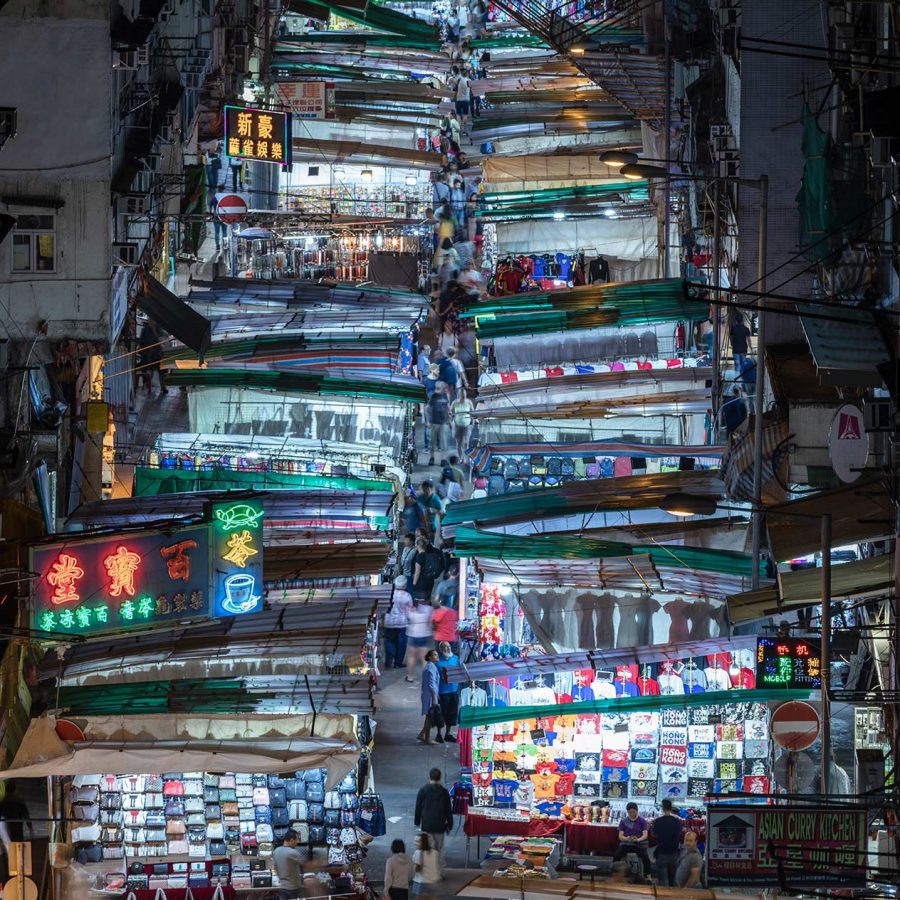
Credit: Mike Pickles
Temple Street Night Market
Best for antiques and trinkets
Perhaps the most famous Hong Kong market, Temple Street Night Market brings together hawkers offering antiques, watches, jewellery, clothes and other goods every evening, from 5pm to 11pm. Fortune tellers also set up shop in tented booths, with tarot card readers, palm reading and even fortune telling by birds among the mix. Cantonese opera singers sometimes turn up to put on lively street performances. For those shoppers seeking precious gems, jade can be found here or at the Jade Market , which is about a five-minute walk away.
Temple Street, Jordan, Kowloon. Closest MTR station: Yau Ma Tei or Jordan

Credit: Moses Ng
Dried Seafood Street
Best for traditional Chinese dried ingredients
There’s no mistaking the pungent smell that rises from Sheung Wan on a humid day. It emanates from Des Voeux Road West, Wing Lok Street and Ko Shing Street – collectively known as Dried Seafood Street – which feature an array of shops selling dried seafood. Owners will even lay their goods out to dry on the pavement. Look for dried shrimp, commonly used in dishes like fried noodles, as well as prized ingredients like abalone and sea cucumber, which often make appearances in Chinese banquets.
Dried Seafood Street, Sheung Wan, Hong Kong Island. Closest MTR station: Sheung Wan

Credit: Mike Pickles
Ladies’ Market
Best for women’s fashion
Famed for its huge variety of women’s – and men’s – clothes and accessories at bargain prices, Ladies’ Market takes up a one-kilometre stretch of Tung Choi Street. This Hong Kong market alone counts more than 100 stalls. Don’t be fooled by the name: you’ll find everything from mobile phone accessories and football jerseys to art pieces and Hong Kong-themed souvenirs. It’s open every day except the first day of Chinese New Year.
Tung Choi Street, Mong Kok, Kowloon. Closest MTR station: Mong Kok
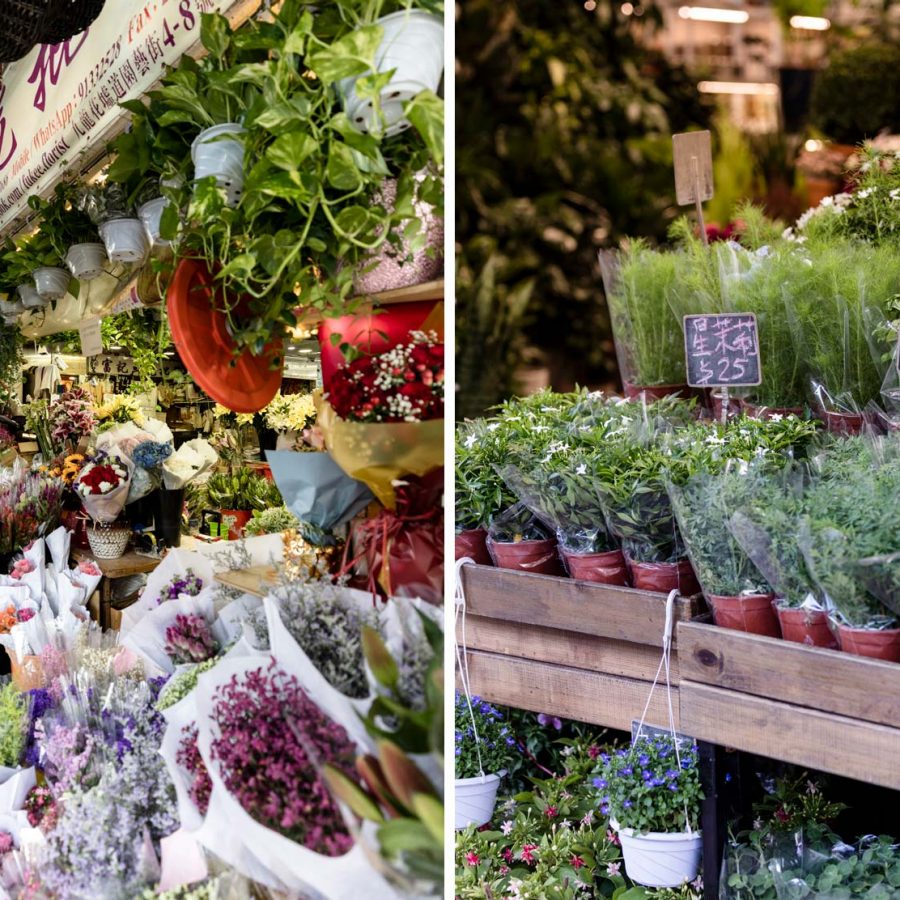
Credit: Mike Pickles
Flower Market
Best for fresh flowers and plants
Mong Kok’s Flower Market naturally attracts those with a green thumb. For many locals, it’s a go-to source for popular houseplants, luscious bouquets and speciality items like auspicious blooms at Chinese New Year and Diwali or evergreen Christmas trees. The market is packed with florists whose stock spills out to the streets, and even for those not looking to buy anything, simply taking a stroll around the area is a delight.
Flower Market Road, Prince Edward, Kowloon. Closest MTR station: Prince Edward
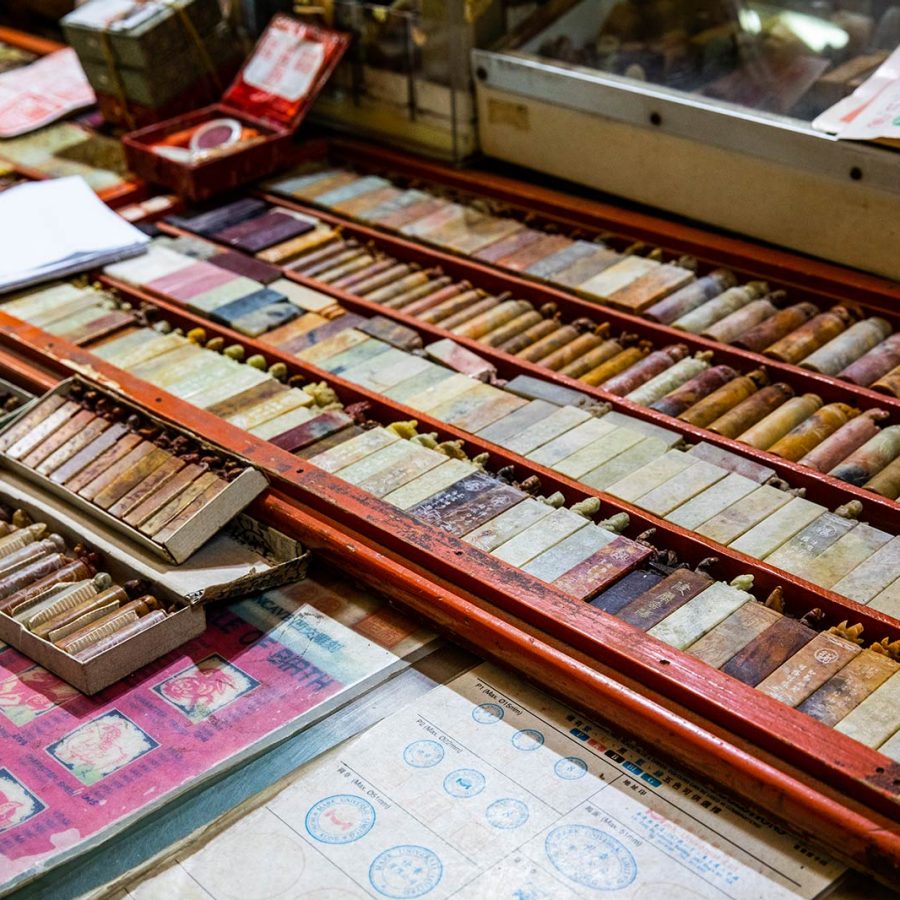
Credit: Moses Ng
Chop Alley
Best for chops and business cards
Some might be surprised to learn that in the modern business hub of Hong Kong, old-fashioned practices like stamps – known locally as ‘chops’ – hand-engraved with a company name and design still exist. (They’ve been used for centuries to literally seal the deal on official documents.) Seek them out along Chop Alley, aka Man Wa Lane, a backstreet where chop-makers run their businesses out of green-tin stalls. Shop for personalised marble seals – which make a unique keepsake – or more practically, rubber stamps or business cards, which some shops can turn around in just a few hours.
Man Wa Lane, Sheung Wan, Hong Kong Island. Closest MTR station: Sheung Wan

Credit: Mike Pickles
Sneakers Street
Best for sneakerheads
If you fancy a new pair of kicks or limited-edition footwear, head straight to Fa Yuen Street, aka Sneakers Street . Just a stone’s throw from the Ladies’ Market, this street is lined with shops that offer the latest footwear from major brands, including hard-to-find products that occasionally have sneakerheads lining up around the block. Many shops also offer sports gear or athleisure fashion.
Fa Yuen Street, Mong Kong, Kowloon. Closest MTR station: Mong Kok
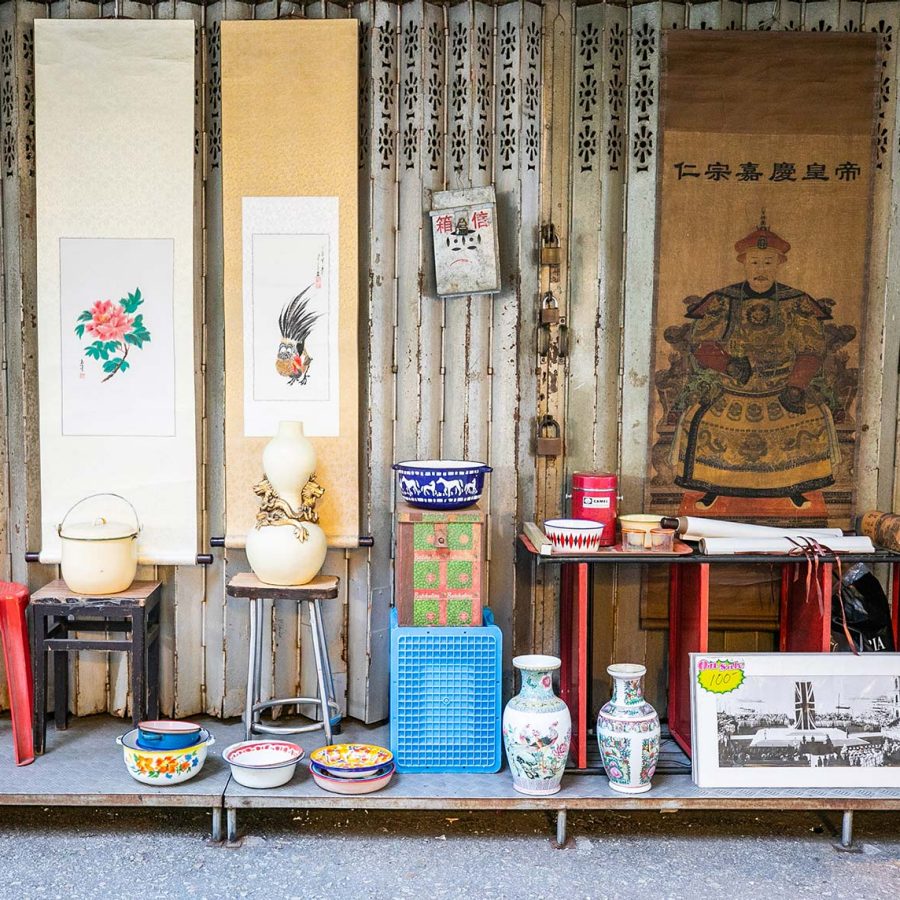
Credit: Moses Ng
Cat Street
Best for vintage souvenirs
Better known as Cat Street , Upper Lascar Row in Sheung Wan is where Bruce Lee memorabilia and jade jewellery sit side by side with imperial Chinese furniture. According to urban legend, the tiny street gained its nickname in the early days when it became known for hawkers who sold stolen items, which are colloquially referred to as “rat goods” in Cantonese. Shoppers who bought “rat goods” were known as “cats.” These days, Cat Street is popular for selling Hong Kong cheap vintage goods as well as pricey antique items.
Hollywood Road and Upper Lascar Road, Sheung Wan, Hong Kong Island. Closest MTR station: Central or Sheung Wan
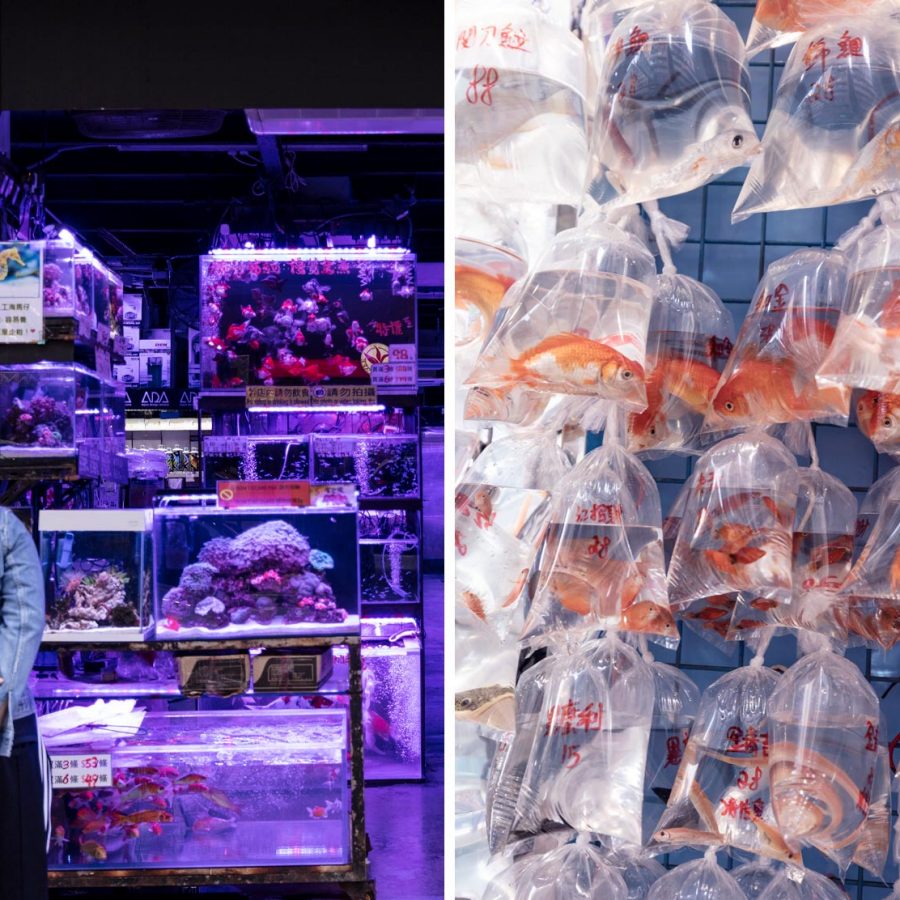
Credit: Mike Pickles
Goldfish Market
Best for aquarium pets
In Chinese culture, goldfish are believed to bring good fortune, which helps explain why there’s a whole Hong Kong market dedicated to them on Tung Choi Street North. The Goldfish Market offers its namesake, sold in clear plastic bags, plus tanks of tropical fish and unusual pets like reptiles and amphibians.
Tung Choi Street North, Mong Kok, Kowloon. Closest MTR stations: Mong Kok or Prince Edward

Chun Yeung Street
Best for fresh produce and meats
The North Point area is home to a large community of migrants from Shanghai and Fujian, who first settled in the area in the 1960s. Many frequent the neighbourhood’s Chun Yeung Street, a bustling traditional Chinese wet market at its best. Market stalls sell fresh fruits, vegetables and meats; along nearby Marble Road, the focus is clothing and home products at a steal.
Chun Yeung Street, North Point, Hong Kong Island. Closest MTR station: North Point
More inspiration
Hong Kong travel information
- China – the Chinese Mainland, Hong Kong SAR, Macao SAR and Taiwan Region
- Hong Kong SAR - English
- Chinese Mainland (China) - English
- Taiwan, China - English
- 香港特別行政區 - 繁體中文
- 中国內地 - 简体中文
- 中國台灣 - 繁體中文
- Africa
- South Africa - English
- Asia
- Bangladesh - English
- Korea - English
- Singapore - English
- Cambodia - English
- 한국 - 한국어
- Sri Lanka - English
- India - English
- Malaysia - English
- Thailand - English
- Indonesia - English
- Maldives - English
- ประเทศไทย - ภาษาไทย
- Indonesia - Bahasa Indonesia
- Myanmar - English
- Vietnam - English
- Japan - English
- Nepal - English
- Việt Nam - tiếng Việt
- 日本 - 日本語
- Philippines - English
- Australasia
- Australia - English
- New Zealand - English







